Nestled in the misty hills of northern Vietnam, Ta Phin Village offers travelers a genuine encounter with Red Dao culture Sapa, herbal traditions, and breathtaking mountain scenery. Through curated experiences by Vietpower Travel, visitors can explore ancient monasteries, soak in herbal baths, and walk through terraced fields that reflect centuries of harmony between people and nature. This peaceful highland community is where cultural authenticity meets eco-friendly tourism — an essential stop for those seeking to understand the heart of Sapa.
Located about 12–15 kilometers northeast of Sapa Town, Ta Phin Village rests quietly along the slopes of the Hoang Lien Son Mountain Range. This is one of the few places where visitors can still experience the true rhythm of northern highland life — home to the Red Dao and H’Mong ethnic groups who have lived here for generations.
The village blends natural beauty and cultural identity. You’ll see wooden stilt houses surrounded by curving rice terraces, women weaving colorful brocades, and elders dressed in their traditional red headscarves. The Red Dao are famous for their herbal medicine and ritual embroidery, while the H’Mong people maintain their ancestral techniques of silver engraving and indigo dyeing.
At an altitude of 1,200–1,400 meters, Ta Phin enjoys a mild mountain climate with a 20°C difference between day and night, keeping the air cool and pleasant throughout the year. The community’s ancient irrigation system channels cold groundwater from limestone springs, nourishing the terraced fields and vegetable gardens below.
The land here is covered with alluvial soil enriched with minerals that have accumulated over centuries, providing ideal conditions for crops and medicinal herbs. Surrounding forests form a humid tropical ecosystem where hundreds of native plants thrive — many used in the Red Dao’s renowned herbal baths and natural remedies.
Today, Ta Phin remains one of the most culturally preserved destinations among all Sapa Villages, offering visitors a rare opportunity to experience local traditions, pristine landscapes, and genuine community hospitality.
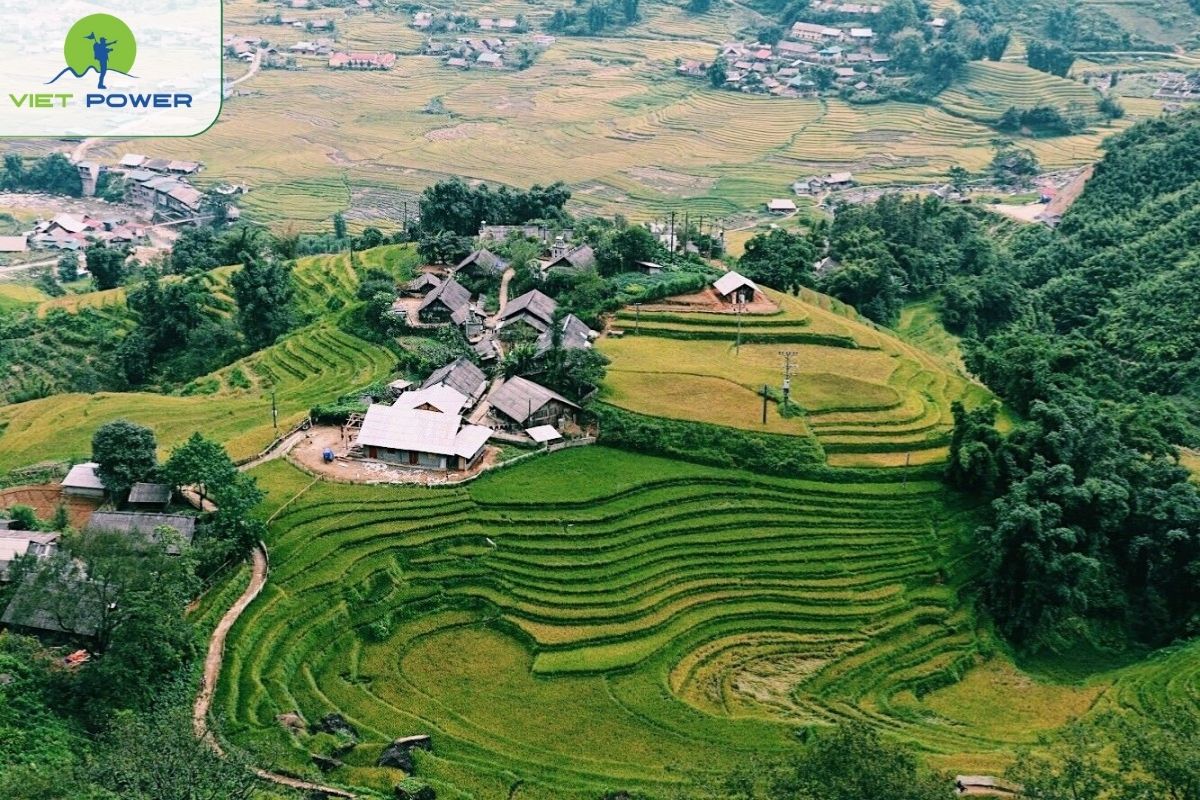
Recommended motorbike rental shops in Sapa:
Rental price: 120,000–180,000 VND per day (manual or automatic).

For families or small groups, a private car is the most comfortable and time-saving choice. Vietpower Travel provides private door-to-door transfers from hotels in Sapa directly to Ta Phin Village.
Reliable transport services:
Estimated cost: 400,000–700,000 VND per round trip.

If you prefer a more active experience, trekking from Sapa to Ta Phin is a wonderful choice.
The trail crosses peaceful valleys and bamboo groves, where you can meet local farmers or Red Dao women weaving by their homes. Along the way, you’ll see the traditional irrigation system still feeding the fields — a testament to the villagers’ centuries-old harmony with nature.
Vietpower Travel Trekking Tour

A signature of Ta Phin is the Red Dao herbal bath, an ancient wellness practice made from 20 to 120 medicinal plants gathered from the surrounding forest. The herbs are boiled in wooden tubs filled with mineral-rich water sourced from natural springs, releasing a soothing aroma that helps improve blood circulation and relieve fatigue.
This treatment reflects the Dao people’s deep understanding of natural medicine. Each family keeps its own blend of leaves — from cinnamon and basil to wild mint and sa nhân — passed down through generations. Vietpower Travel can arrange authentic bathing sessions with local households for travelers who wish to experience this restorative ritual firsthand.
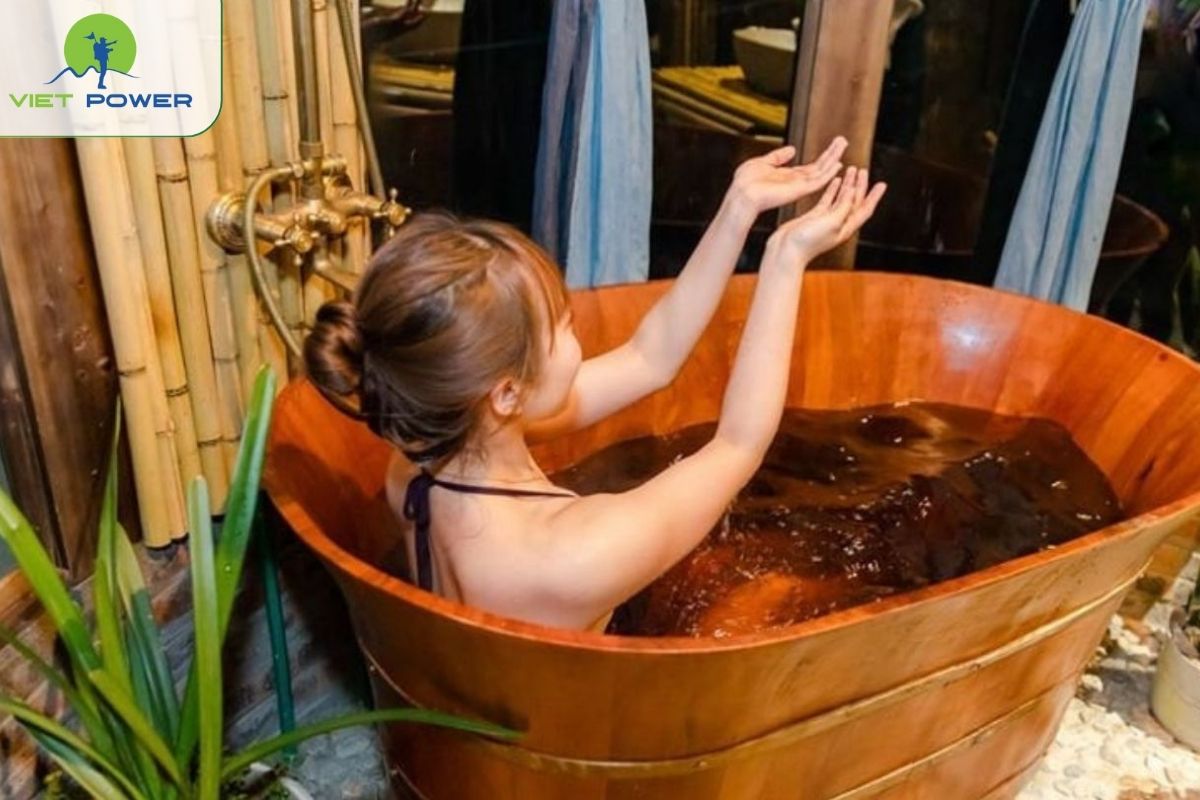
Built by French nuns in the early 1940s, the Ta Phin Monastery now stands as a quiet stone ruin overgrown with moss and ivy. Its arched windows, grey sandstone walls, and open corridors give the place a mysterious charm, especially at sunset.
The site lies about 1 km from the village center and offers excellent photo opportunities. Local guides often share stories about the monastery’s history, blending European architecture with the untouched beauty of northern Vietnam.
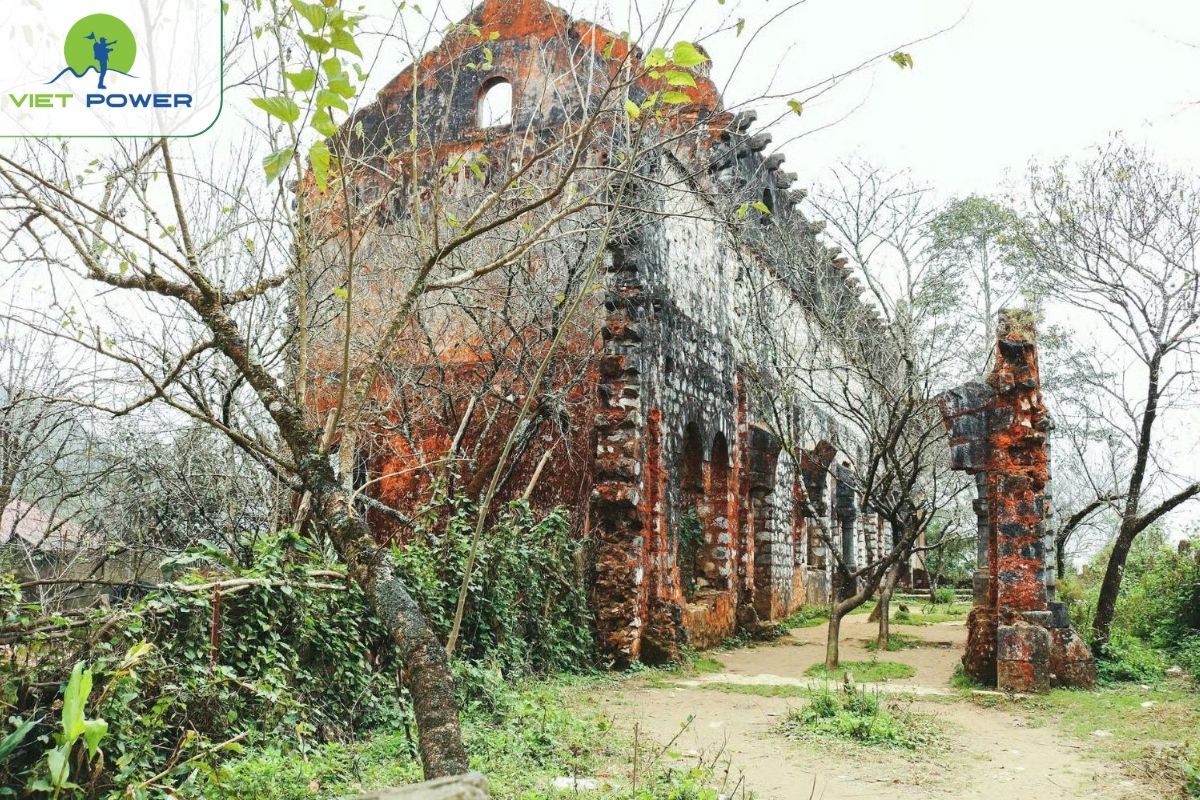
About 3 km from the village, Ti Phin Cave lies beneath a limestone hill, featuring spectacular stalactites formed over thousands of years. The locals believe it once sheltered their ancestors and treat it as a sacred place.
Inside, you’ll find chambers shaped like natural sculptures — columns resembling rice mounds, mother-and-child figures, and animal forms created by dripping mineral water through the ages. Bring a flashlight and go with a local guide for a safe and enriching visit.
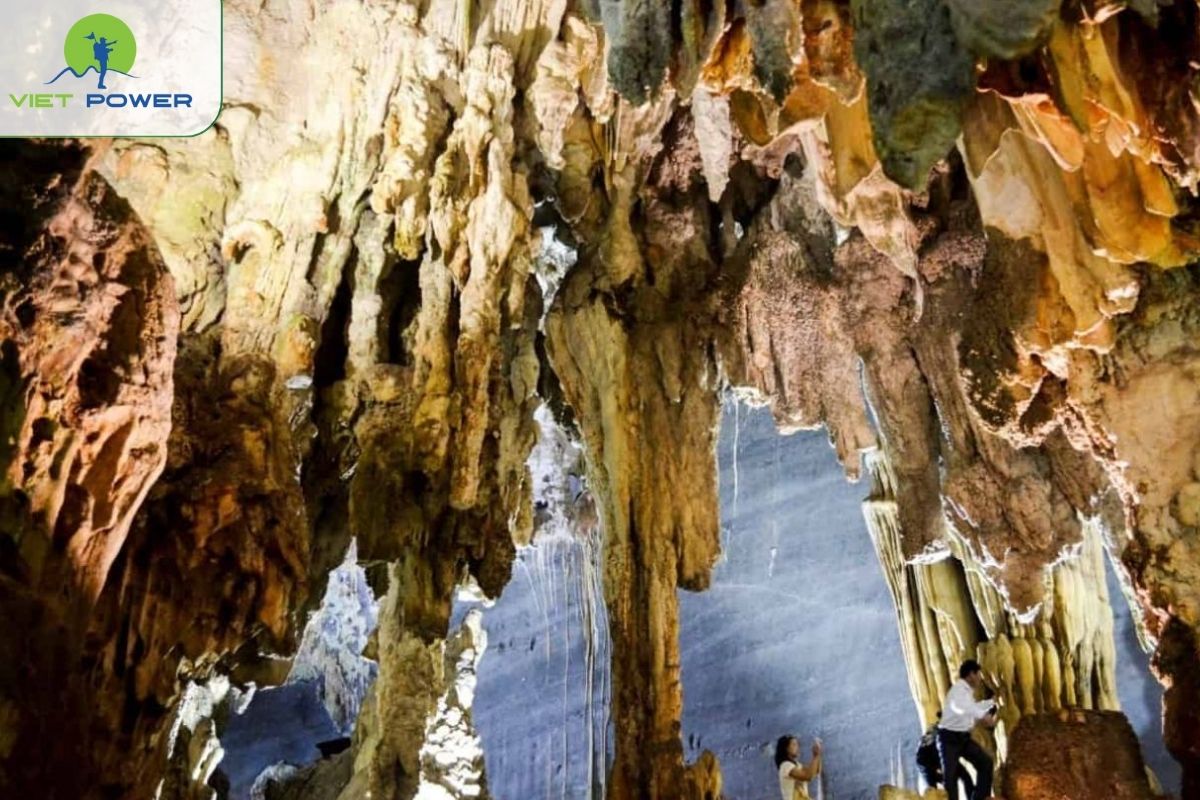
Ta Phin’s terraced fields are an artwork of human ingenuity and mountain adaptation. Fed by ancient irrigation systems and alluvial soil, the crops thrive throughout the year, creating a sustainable farming cycle that rotates between rice, corn, and vegetables.
From January to April, nearby strawberry gardens open for visitors to pick fresh fruit right from the vines. The cool mountain air and the scent of ripening berries make this a refreshing stop during your journey.

At the center of Ta Phin stands a vibrant red structure called the Community House, modeled after the Red Dao headscarf. This building serves as a space for cultural performances, weaving workshops, and traditional music events.
It also functions as a meeting point for travelers who want to learn about local projects supported by community tourism. Vietpower Travel encourages guests to stop here and connect directly with villagers to understand how tourism helps preserve their way of life.
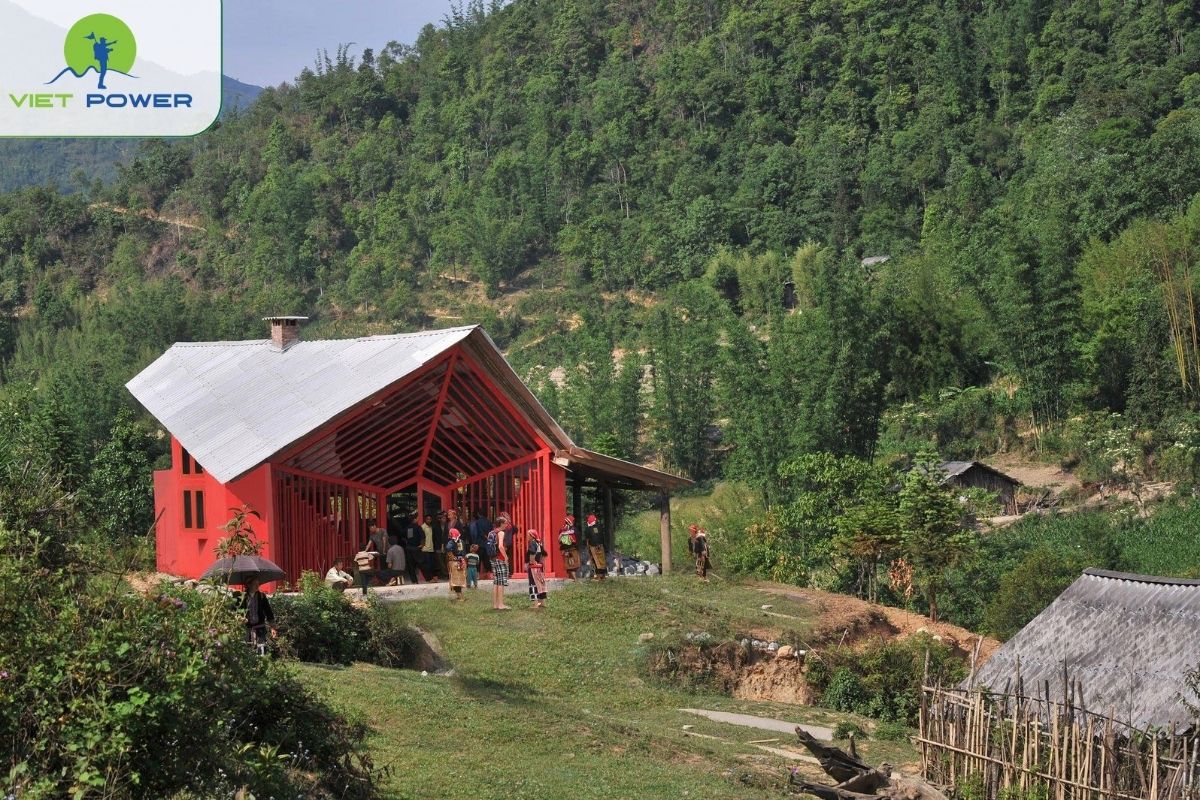
Every spring, Ta Phin hosts the Love-Duet Singing Festival, where young men and women exchange lyrical verses under the blooming plum trees. The songs express affection, wit, and hope for future unions — a joyful reflection of Red Dao social life.
Visitors can enjoy performances, join the dances, and witness one of the most heartfelt events of the highland year.
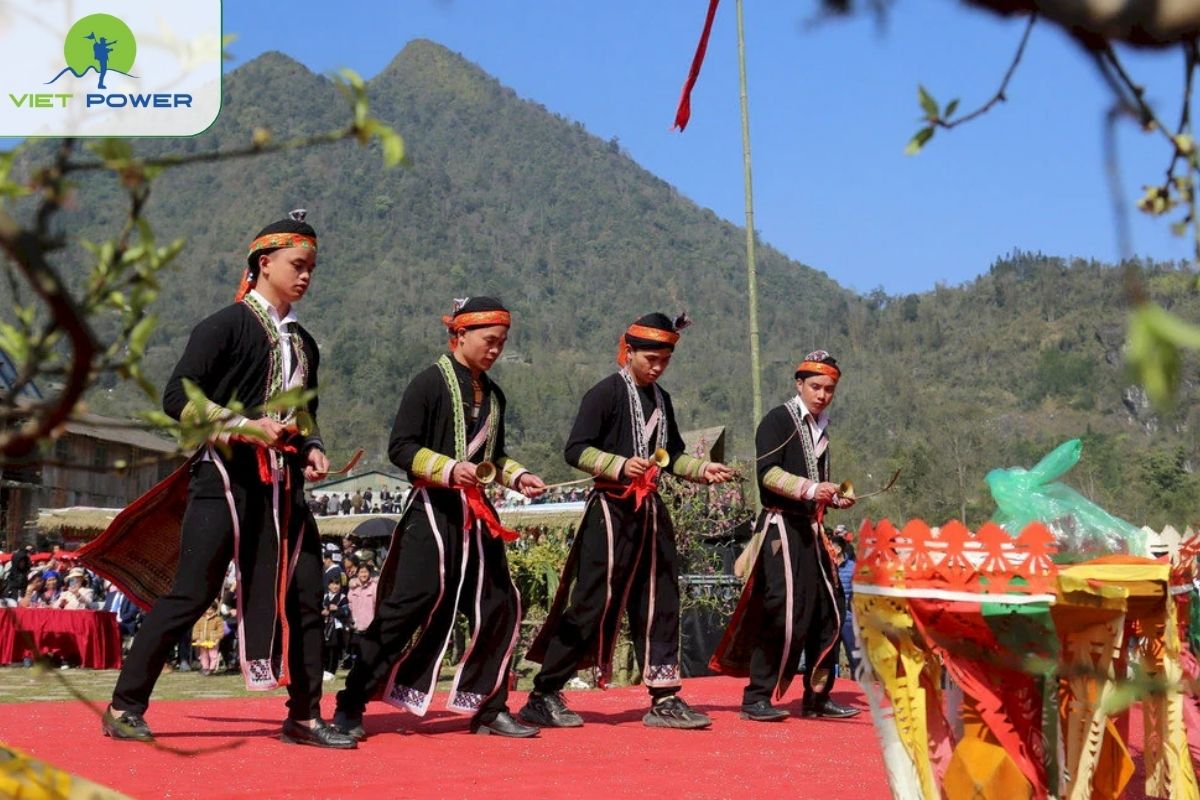
Marriage in the Red Dao community is a meaningful ritual with family blessings and symbolic attire. Brides wear intricate embroidered costumes, while grooms present offerings of wine and silver jewelry.
The villagers produce these textiles using natural indigo dye, created through a 30-day fermentation process that gives each piece its deep blue tone. This careful craftsmanship keeps the community’s heritage alive.

The Dao silversmiths of Ta Phin are known for their skillful V-shaped and floral engravings, each pattern carrying spiritual meaning. Earrings, necklaces, and belts are handmade from pure silver using small charcoal forges and traditional chisels.
Travelers can visit these workshops to watch artisans create jewelry and learn how each motif symbolizes prosperity and happiness.

In nearly every corner of Ta Phin, you’ll find women seated by wooden looms, weaving colorful brocades decorated with geometric shapes and natural symbols. The process involves hand-spinning cotton, stitching patterns, and dyeing with natural colors from forest plants.
Visitors can take part in short demonstrations to understand the precision and artistry behind every fabric. Buying these handmade pieces directly supports the families and their sustainable craft.
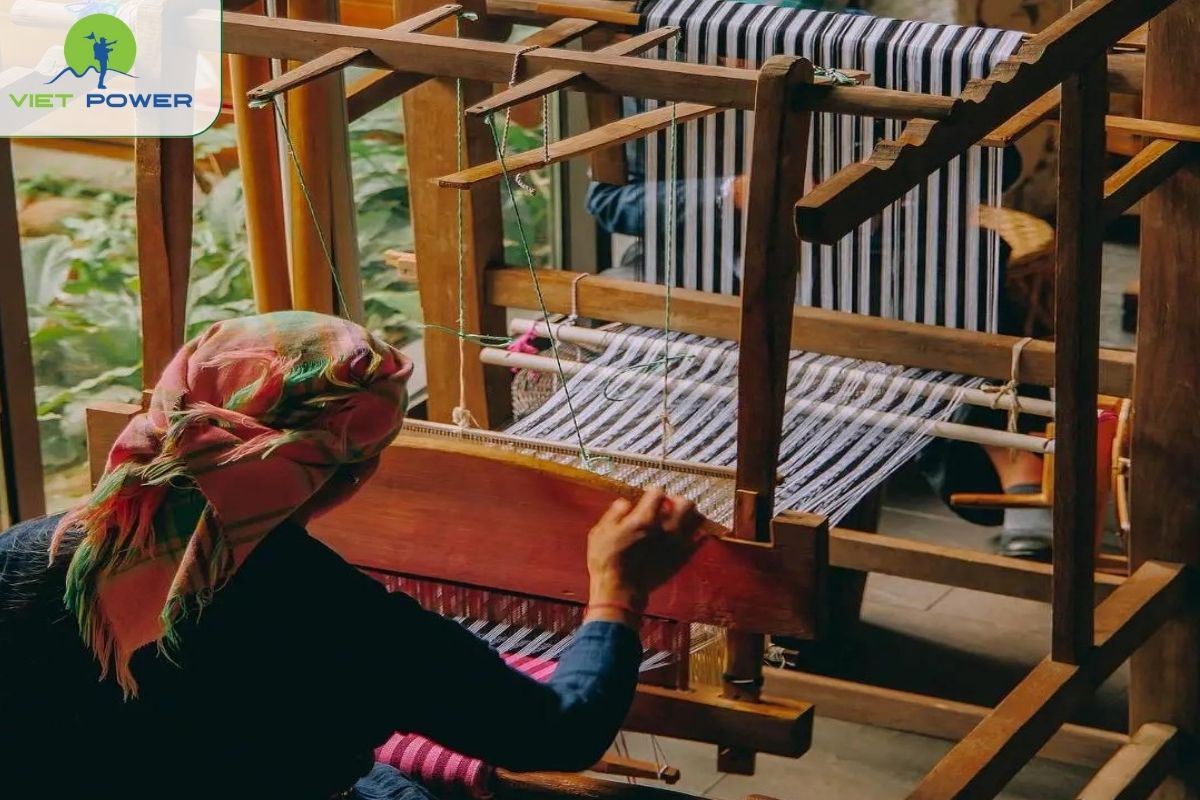
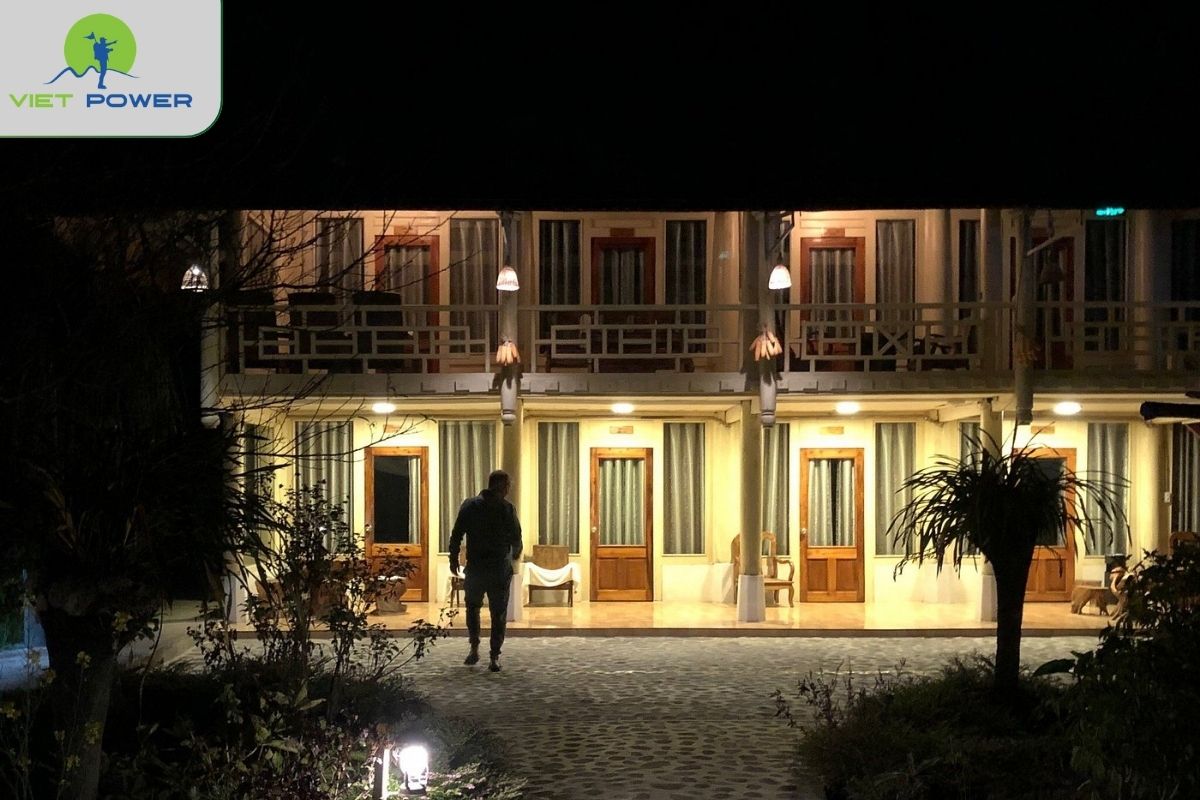



Ta Phin has four seasons, but the most beautiful times to visit are from March to May, September to October, and October to January. Each period offers a different experience for travelers.
From early spring, the hills around Ta Phin are covered with red Rhododendron flowers and green rice terraces. The weather is mild and dry, perfect for trekking, herbal baths, or cycling through the valley. The sky is clear, and the temperature stays between 18–25°C, making outdoor travel comfortable.
Autumn is the most scenic time in Ta Phin. Terraced fields turn golden as locals harvest rice, creating stunning photo spots across the valley. The average temperature is about 20°C, cool during the day and pleasant at night.
Visitors can join farmers in simple harvest activities or enjoy local dishes made from fresh crops. This is also the best time to combine your trip with nearby Sapa Villages like Lao Chai or Ta Van.
In the cold months, Ta Phin becomes lively with community events such as the Cap Sac Ceremony (a Red Dao coming-of-age ritual) and the Love-Duet Singing Festival. Villagers wear traditional clothes, sing, and dance around bonfires.
Although nights can drop below 10°C, the cultural atmosphere makes this period special for travelers who enjoy authentic highland traditions.
Understanding local customs helps visitors show respect and connect better with the community. Here are some simple rules to follow.
From the rhythmic songs of the Red Dao festivals to the aroma of herbal baths rising from wooden tubs, Ta Phin Village embodies the spirit of Vietnam’s northern mountains. Staying in sustainable homestays and joining local crafts allow travelers to appreciate its beauty while supporting community life. For anyone exploring Vietnam Tourist Attractions, Ta Phin stands out as a cultural retreat where nature, wellness, and tradition come together in perfect balance.